If a capricious beauty azalea appeared at home, trouble can not be avoided. True, in return every year she will give great aesthetic pleasure and will reward with a magnificent bouquet that will overshadow all other indoor plants. By its nature, it can be compared with the Rose from the "Little Prince" by Antoine De Saint-Exupery, which had to be hidden behind a screen from the sun, and covered with a glass cap from drafts at night.
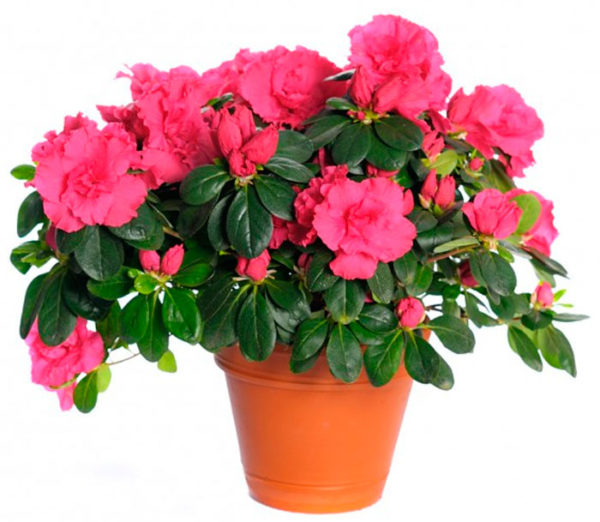
Azalea, as a true woman, requires constant care at home, transplantation, reproduction, and is susceptible to disease. One who will cherish and cherish her can truly understand her.
Content
Azalea: how to care at home
Azalea is a close relative of such ancient and famous genera as rhododendron and heather. If you translate its name literally, it turns out - "dry rosewood" (Greek. "Rhododendron" - rosewood, "azalea" - dry). So, the main features were noticed very precisely at the linguistic level: flowers similar to rosebuds and dry wood of trunks and branches.
Rhododendron in Greek means “rosewood,” and the word “azalea” in Greek means “dry.” So the plant was named because of the dry wood of trunks and branches.
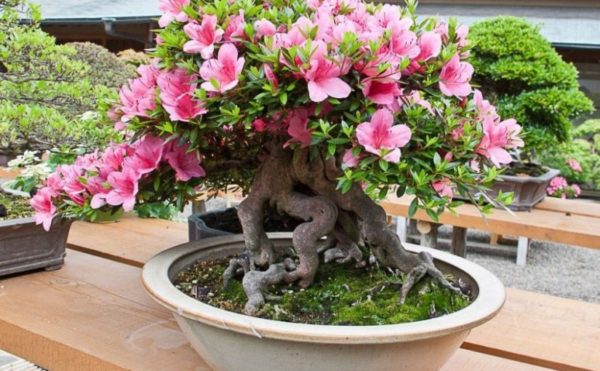
In the open ground, azalea grows to the size of a full-fledged shrub and decorates gardens, squares and parks. And her relatives in the room are no less beautiful, but they are no more than 50 cm tall.
The birthplace of azalea is Southeast Asia and North America, and it traditionally grows in southern Europe. It was brought to Russia at the beginning of the last century.
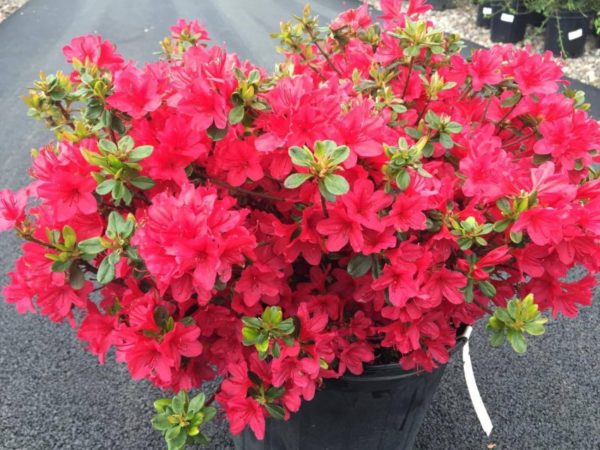
In nature, there are about 350 species of plants, and only Indian and Japanese species have taken root in indoor floriculture. They differ little from each other - only the size of the leaves and flowers. Japanese azaleas have dense dark green pubescent leaves up to 3.5 cm in size, flowers up to 5 cm in diameter, multi-petalled, in some species with terry edges.
Indian azaleas have much smaller leaves and flowers. By the way, contrary to the name, she is also from the Asian continent.
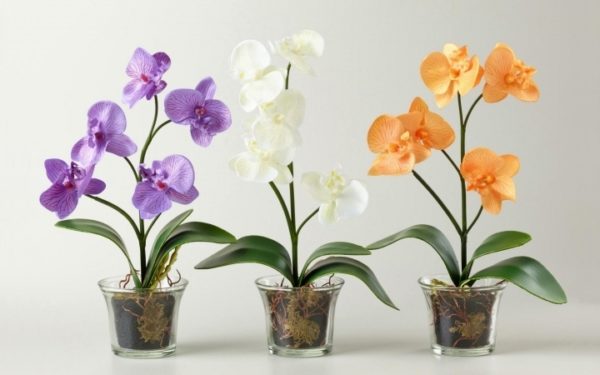 You may be interested in:
You may be interested in:Plants begin to bloom, reaching the age of 3-4 years. Traditional coloring shows all shades of pink. But breeders brought out azaleas with a wide palette of colors. There are also two-color specimens, usually these are flowers with double petals.
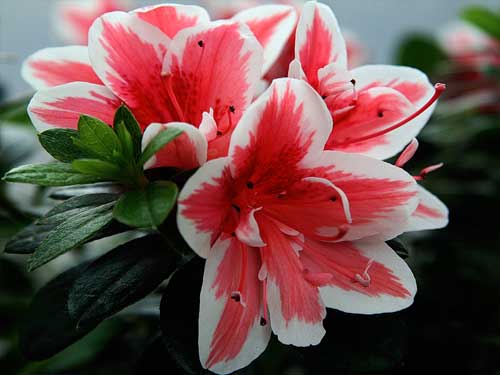
Home Care aims to keep the azalea flowers longer. When buying, choose unblown bushes. The main thing is that by the first flowers you can understand the color. A lot of buds are a guarantee that the azalea will go through adaptation in the apartment faster and will please you with abundant and long flowering.
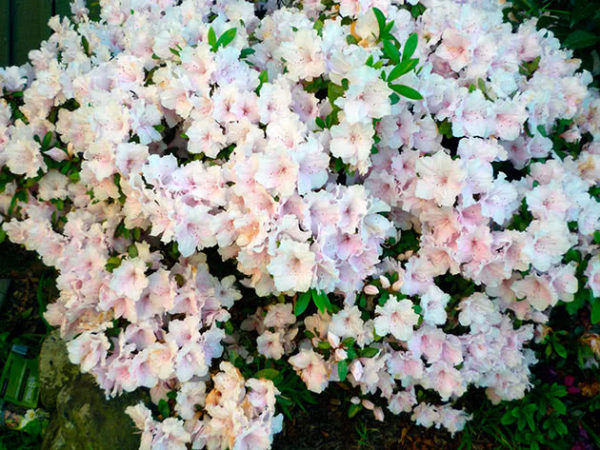
But the presence of green plaque or even moss on the surface of the earth is considered normal, as it indicates that the soil is acidic - that's how this flower loves.
Azalea requires careful care at home. Only in a favorable microclimate will it bloom regularly.
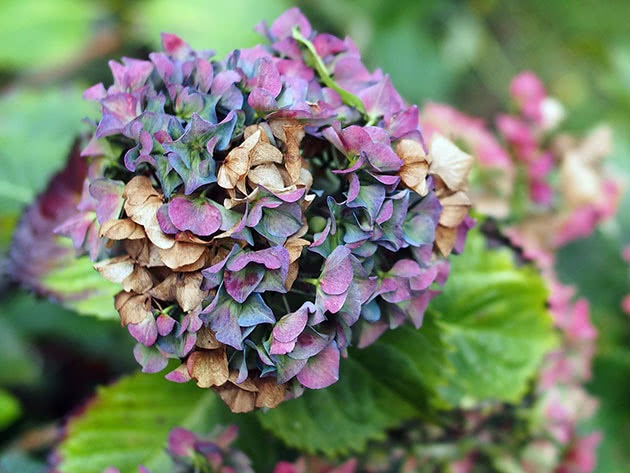 You may be interested in:
You may be interested in:Lighting
Azalea is a light-loving flower, so care for it at home should begin with the right choice of a permanent place with good lighting. Window sills of any windows are suitable, except for those looking to the south. Azaleas must be shaded from direct sunlight.
During the formation of buds - October-November, in order for the buds to gain strength, additional lighting will be needed. To do this, you can install a lamp with a fluorescent lamp or LEDs and turn it on to increase the duration of daylight hours.
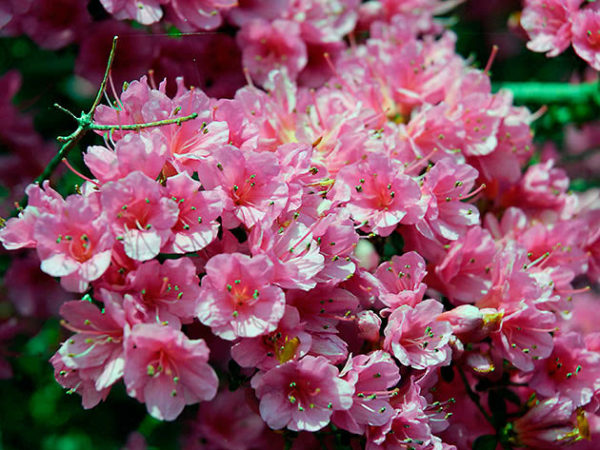
Temperature
The temperature regime is no less important for azaleas. The plant is cold-blooded. Therefore, the temperature of the air where the azalea is, should not be higher than +15 and not lower than + 18 ° C. By the time the buds are formed, it must be reduced to +10 or + 12 ° C.
Azalea blooms for two months or longer. All this time, the room temperature should not be higher than + 15 ° C.
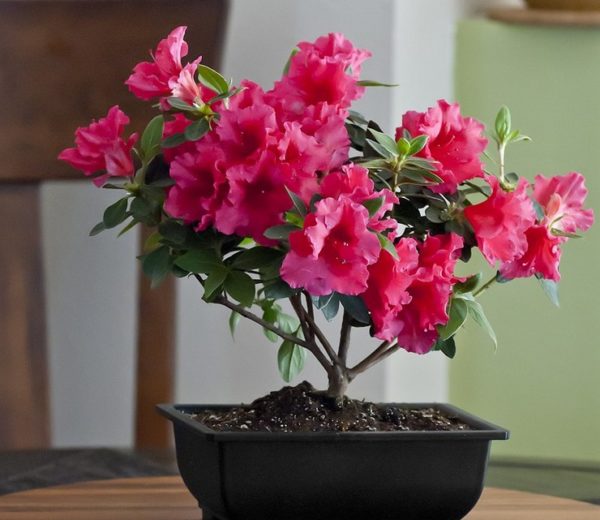
Closed verandas, insulated balconies, where there is a lot of light and cool, are good places to place azaleas. You can use air conditioning to lower the temperature in the room.
Only you need to be sure that the snow that you brought does not contain harmful impurities, dirt, reagents, etc. For these purposes, passive cooling and watering are suitable and ice cubes from the freezer.
Humidity
Daily spraying with filtered cool water will be required. During flowering, it does not stop, but make sure that droplets of moisture do not fall on delicate petals. From this, brown spots may remain on the flowers. On sunny days, azalea flowers can be burned.
- To increase air humidity, open containers with water are placed next to the plant.
- When caring for azalea in winter, spraying should be given even more time, since at home the air can be overdried by central heating batteries.
- In the summer of azaleas, it is useful to have a "vacation" —take it out into the garden in a shaded place, in the gazebo or on the terrace. She transfers drafts calmly.
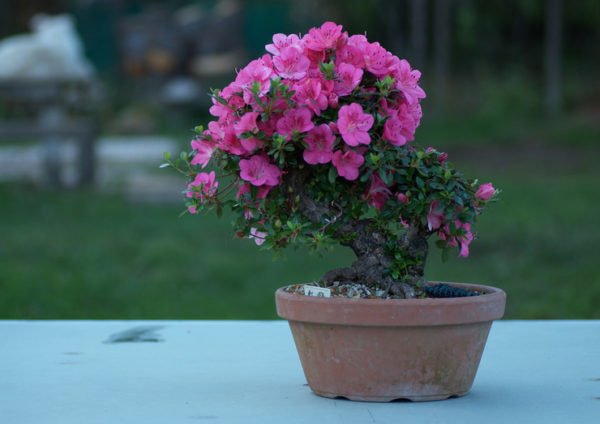
You can make several flower pots in one pan, fill the free space with pebbles or decorative pebbles, pour a small layer of water. So you get both hydration and a beautiful floral arrangement.
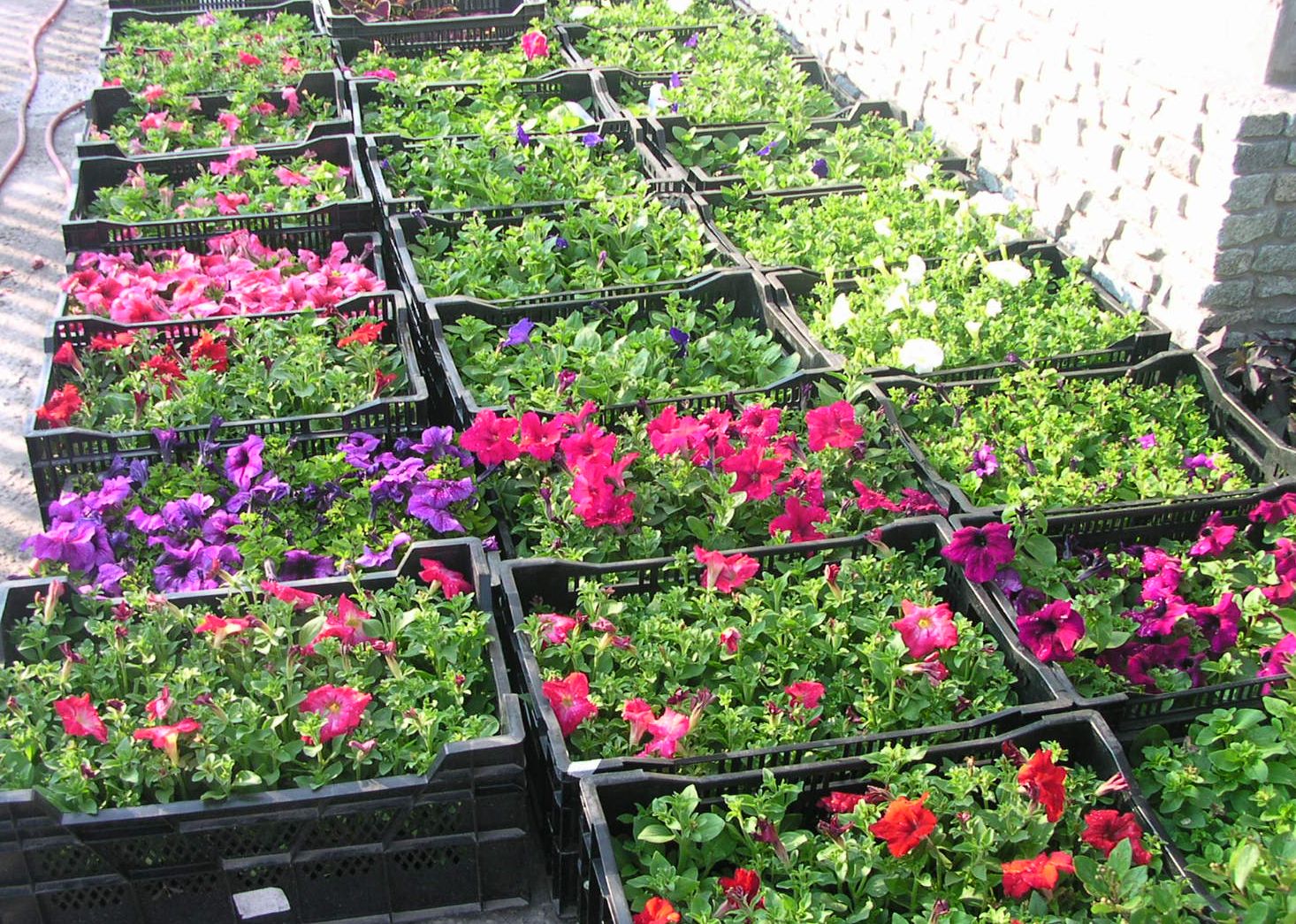 You may be interested in:
You may be interested in:Watering
Improper watering can ruin a tender plant. It is necessary to establish rules for him once and for all and follow them strictly:
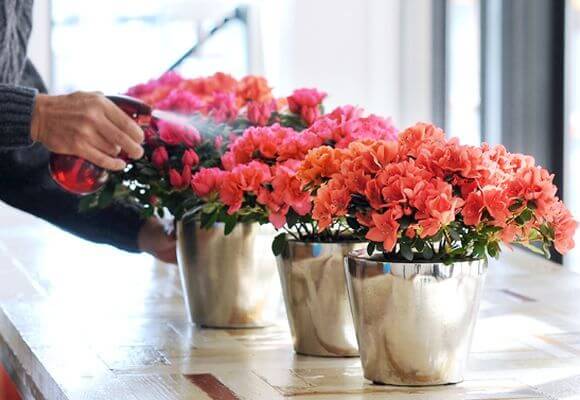
- Lumps of land should not be overdried.
- If the earth in the pot is very dry, it is allowed into a bucket of water so that the water does not reach the edge of the pot and does not flow into it. In a few hours, the soil will take as much moisture as it needs.
- Excess fluid must be drained from the pan so that the roots do not decay, and pathogenic microbes do not multiply.
- A flowering plant consumes more moisture than usual, so watering is enhanced.
- You can not water tap water. It must be pre-filtered and allowed to stand for several days so that the chlorine disappears.
Azalea soil
Azalea is one of the rare indoor plants that needs acidic soil with a pH level of 4-4.5. It is recommended to use soil with increased friability and heat capacity - the so-called heather land. It is harvested by removing the top layer of humus under the plantings of heather trees.
If it is impossible to acquire such soil, it is replaced by mixing sheet, peat soil and river sand, the proportions are 2: 4: 1. In exceptional cases, the soil may be suitable for planting orchids. Azalea does not tolerate dense clay soil.
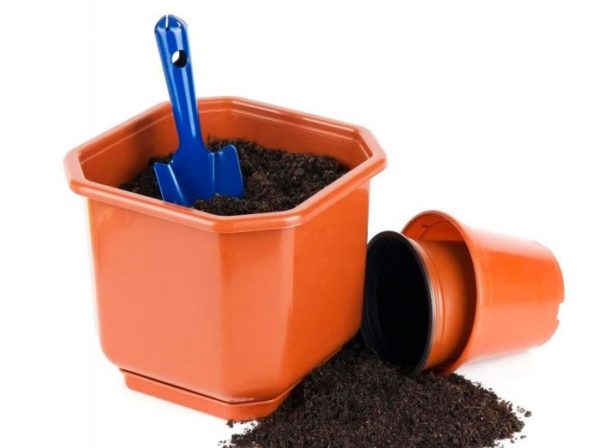
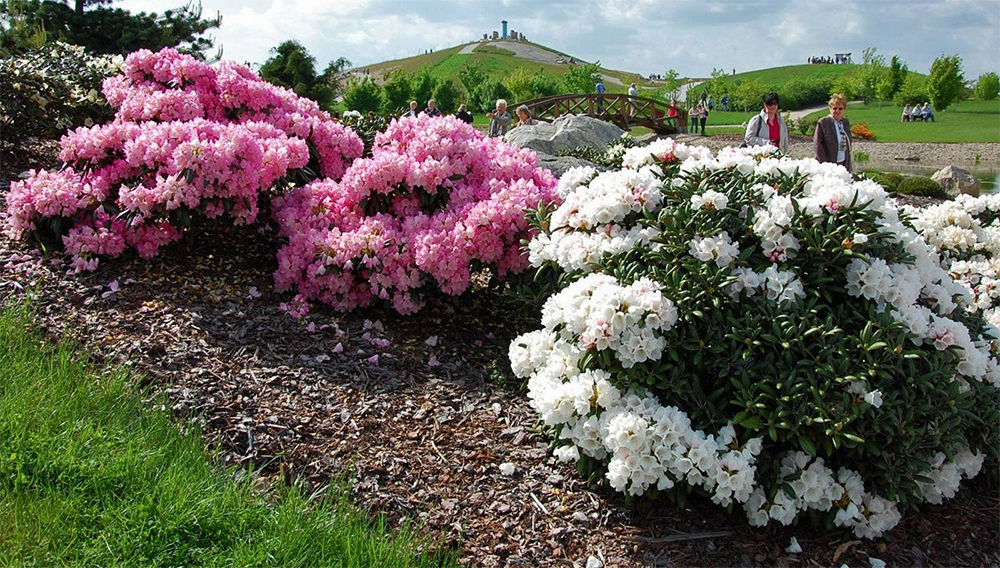 You may be interested in:
You may be interested in:Cutting and nipping plants
When caring for azaleas at home, regular pruning and pinching of the apical shoots is necessary. You can navigate during crown formation on a photo from catalogs.
The basic rules for forming trimming:
- The first pruning is carried out in May and continues until the formation of the first buds.
- Remove weak and elongated shoots.
- Get rid of excess thickening - thin out.
- Pinch new growth at a height of 4-6 leaves.
- Be sure to remove the shoots that appear next to the buds.
- Carefully and timely get rid of all wilted flowers.
- The crown is formed in the form of a tree with a standard trunk or a bush with several equal shoots.
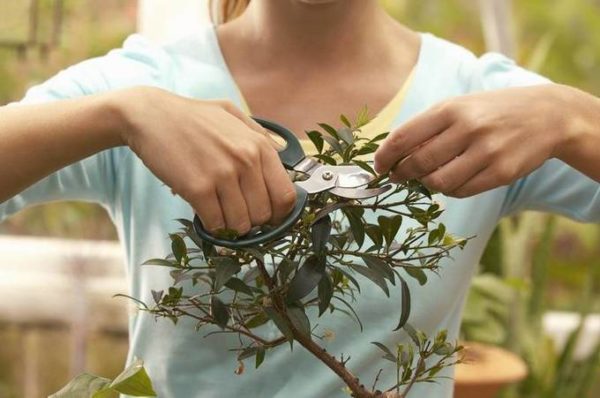
It must be remembered that the more magnificent the crown, the poorer flowering will be, and vice versa.
Azalea top dressing and growth stimulants
Caring for azaleas at home requires regular top dressing. For these purposes, use a specially selected ready-made mineral complex "Azalea".
During the formation of buds, superphosphate is added to conventional fertilizers (the solution is prepared at the rate of 1.5 g per 1 liter of water). Use special stimulators of the formation of buds - phytohormones.

Transfer
An important step in caring for an azalea flower is a transplant at home. Before starting work, you need to carefully study the step-by-step photos of the process or watch the video instruction.
Before transplanting, extra shoots, dried leaves and inflorescences are removed from the plant. So it will be easier for him to take root.
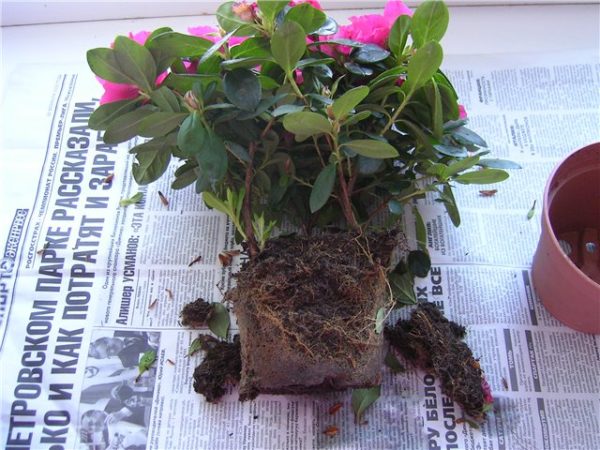
Transplant bushes with a lump of land. Azalea roots are thin and easy to damage. Therefore, in the period between transplants, the soil is not loosened so as not to affect the surface roots.
A new pot is taken a little more than the previous one. Empty seats in the tank after transshipment of the bush are filled with new soil. Azalea is growing very slowly, it does not require a large amount of soil.
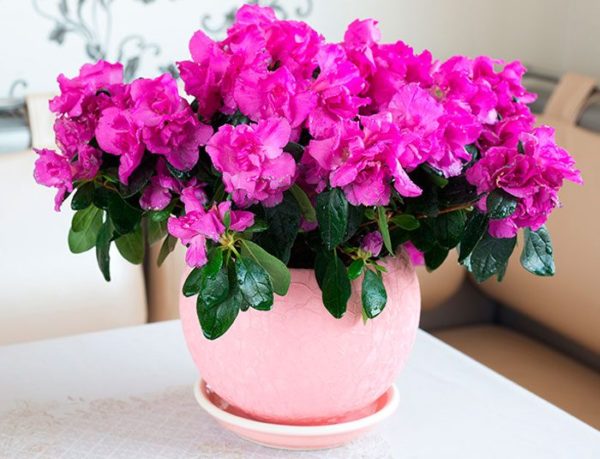
It is important that there is a drainage hole at the bottom of the pot and a good layer of expanded clay as drainage. The roots of the plant can not be deepened, it is better to choose a low cache-pot.
Azalea propagation
Azalea can be propagated independently, although it is rather difficult. Cuttings 5-8 cm long are rooted in the usual way in moist acidified soil. You can use lignified branches left after trimming.
Cuttings for 2-6 hours are immersed in a root stimulating solution, Kornevin, then planted in a box with prepared soil of the desired acidity to a depth of 2 cm. The container with the cuttings is covered with transparent glass, plastic, and tightened with a plastic wrap. Periodically, the sprouts open for ventilation, watering and spraying.
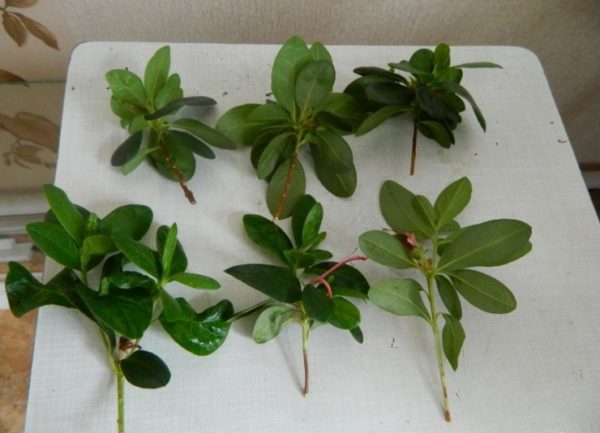
When flower buds appear, pinching is performed. The roots of young shoots should develop into a full-fledged system in about two months. Then the cuttings are planted, following the general rules of transplantation. The upper shoots are pruned to form a crown of the correct rounded shape.
The plant will finally form in about six months. Adult azalea can be divided gently with minimal damage to the root system during transplantation. Thus, two goals will be achieved: reproduction and rejuvenation of the bush. If everything was done correctly, then new azaleas will bloom next year in due time.
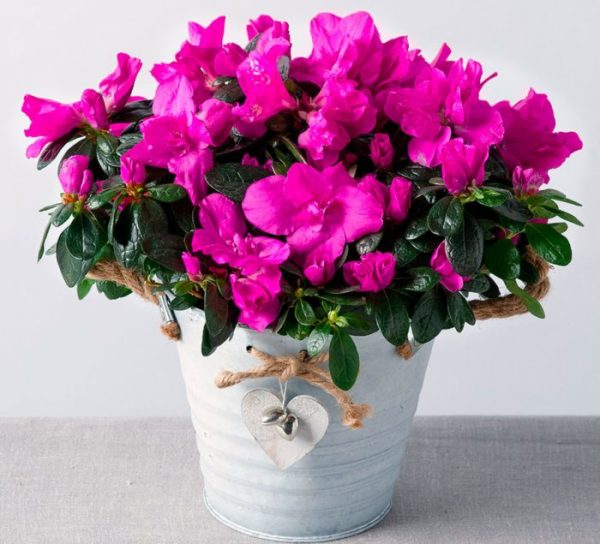
The following division can be carried out no earlier than after 3 years.
Reproduction by seeds is the lot of professional breeders; it is rarely practiced among amateur gardeners. Most of the seeds do not germinate, young seedlings die at the slightest error. But if you like to experiment, why not try.
Diseases and pests of azalea
Demand for chic flowering azalea bushes does not dry out. This is a great alternative to a bouquet of cut flowers, because living plants will stand much longer.
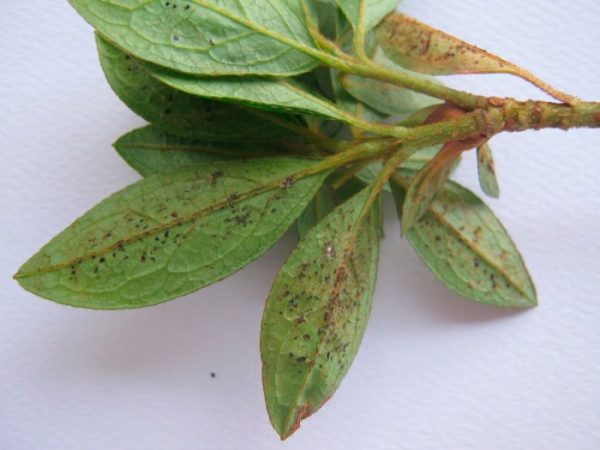
Care for azalea at home should begin immediately after purchase and methodically follow the rules once and for all.
| Signs | Cause | Elimination |
| Leaves dry and fall. | There was a burn due to oversupply of the sun, lack of watering. | Change the location. Increase the frequency of watering and spraying. Install air humidifiers. |
| Brownish, rusty or ashy coating. | Fungal disease. | Damaged leaves are removed. The remaining ones are treated with solutions of soap, potassium permanganate, soda or purchased drugs. |
| Flowers wither prematurely and turn yellow. | Lack of nutrition or poor quality water. | Increase the frequency of dressing. Water is carefully filtered and defended. |
| Reduced flowering period. | Very hot climate, dry air. | Moving to a cool place, additional spraying. |
| Leaves twist, change shape, color. | The defeat of late blight as a result of waterlogging. | Transplant, reduced watering. Spraying with blue vitriol. |
| The leaves become stained, the edges partially dry out, arachnoid plaque and insects are visible. | Infection with ticks, scale insects, whiteflies. | The leaves are wiped with a cotton swab dipped in a solution of laundry soap, then sprayed with insecticides: Aktellik or Aktara. |
“Slowly but surely” is the motto of all the azalevods. The plant has a long flowering life. With age, its flowering will become more magnificent. Because she is not afraid of pruning, bonsai art lovers use azalea to create bizarre, lively sketches.

Having mastered the care of one bush of azaleas, you will probably want to collect an extensive collection and create a unique mix of azaleas. After all, if you managed to tame such beauty, then love promises to be long and mutual.




 10 beautiful annuals that bloom all summer
10 beautiful annuals that bloom all summer Sow in the ground, without seedlings: 10 beautiful and unpretentious flowers
Sow in the ground, without seedlings: 10 beautiful and unpretentious flowers Platicodon planting and outdoor care
Platicodon planting and outdoor care Hosta - planting and care in the open ground in the Urals
Hosta - planting and care in the open ground in the Urals